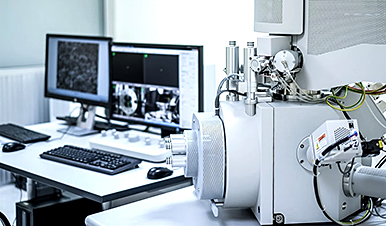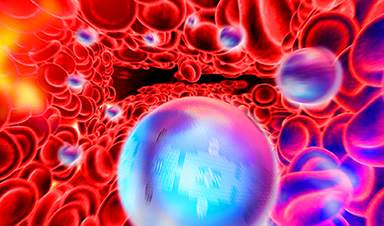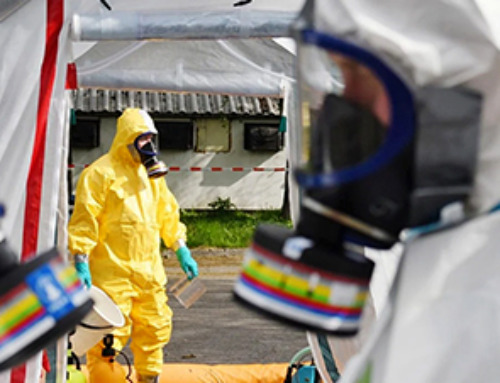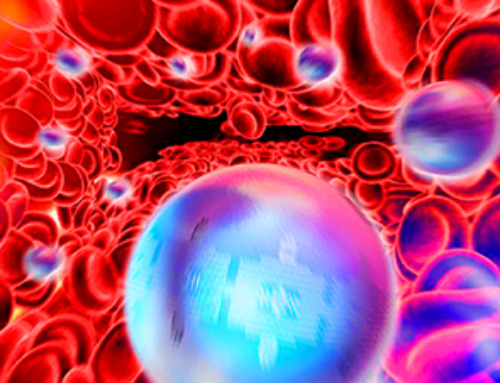With their high surface area and enhanced physicochemical properties, nanomaterials play a critical role in drug delivery, consumer products, and environmental technologies. However, their nanoscale dimensions enable interactions with cellular components in complex and sometimes unexpected ways, potentially inducing oxidative stress, inflammation, or bioaccumulation. As their use expands, understanding these risks through nanotoxicity testing becomes essential.1
Why Assess Nanotoxicity?
Assessing nanotoxicity helps ensure the safe use of nanomaterials while protecting human health and the environment. Nanomaterials can enter the body through inhalation, ingestion, or injection. Once inside, they may accumulate in organs and disrupt cellular functions. Their presence in cosmetics, pharmaceuticals, and household goods also raises concerns about environmental exposure. Reliable assessment methods help identify potential hazards before widespread use.2
Methods of Nanotoxicity Assessment
In Vitro Methods
In vitro methods are widely used to assess nanotoxicity through controlled experiments on cell cultures. Cytotoxicity assays such as MTT (tetrazolium-based assays) and LDH (lactate dehydrogenase) release assays evaluate cell viability and membrane integrity.3
Genotoxicity tests, including comet and micronucleus assays, examine DNA damage and chromosomal alterations caused by nanoparticle exposure. By exposing specific cell lines, such as epithelial cells that model the skin, lungs, or gastrointestinal tract, these methods provide critical insights into how nanomaterials interact with different biological barriers.3
For instance, Collins et al. provide key recommendations for conducting in vitro comet assays with mammalian cell cultures. They suggest using non-cytotoxic concentrations, defined as less than 20 % cell viability loss, and recommend concentrations below 100–150 μg/mL for non-cytotoxic nanomaterials.
The selection of cell lines should align with the target organ and exposure route, ensuring relevant biological insights. To capture the full spectrum of nanoparticle interactions, both short-term (2–3 hours) and long-term (24-hour) exposure studies are advised.
Additionally, distinguishing between direct DNA interactions and oxidative stress-induced genotoxicity remains a crucial consideration.4
In Vivo Methods
In vivo studies assess how nanomaterials behave in living organisms. Rodent models help researchers track bioaccumulation and long-term effects on organs like the liver, kidneys, and brain.3 These tests use exposure routes that mimic real-world scenarios, such as inhalation, ingestion, and injection.
While in vivo testing provides valuable data, ethical concerns and species differences highlight the need for alternatives. Regulatory efforts increasingly focus on reducing animal testing by improving in vitro and computational models.3, 5
Computational Methods
Computational toxicology applies in silico models to predict nanotoxicity by analyzing the physicochemical properties of nanoparticles. Techniques such as Quantitative Nanostructure-Toxicity Relationship (QNTR) and Quantitative Structure-Activity Relationship (QSAR) modeling rely on descriptors like particle size, surface charge, aggregation state, and solubility to estimate biological interactions and toxic potential.6
These models offer an efficient alternative to traditional toxicity assessments by reducing dependence on animal studies, minimizing costs, and enabling high-throughput screening. By incorporating data from in vitro experiments, bioinformatics, and machine learning algorithms, computational approaches refine toxicity predictions and enhance our understanding of nanoparticle behavior within biological systems.5
Surface Characterization Techniques
The size, shape, and surface chemistry of nanoparticles influence their interactions with biological systems. Several techniques help researchers analyze these properties:
Scanning Electron Microscopy (SEM): SEM provides high-resolution images of nanoparticles, allowing detailed analysis of their size, shape, and surface morphology. By scanning a focused electron beam across the sample surface, SEM generates images based on the interaction of electrons with the sample. This technique is especially useful for identifying surface features, defects, and coatings.7
Atomic Force Microscopy (AFM): AFM provides three-dimensional imaging and precise measurements of surface properties such as roughness, stiffness, and adhesion strength. Unlike SEM, AFM does not require extensive sample preparation and can operate under ambient or liquid conditions, preserving the native state of nanoparticles. This makes it particularly valuable for studying nanoparticle interactions with biological membranes and their penetration into cells. AFM also quantifies forces between nanoparticles and biological systems, providing insights into their physical interactions and toxicity mechanisms.7
X-Ray Photoelectron Spectroscopy (XPS):XPS is used to analyze the surface chemistry of nanoparticles, including their elemental composition, oxidation states, and surface coatings. This technique is highly sensitive to the outermost layers of nanoparticles, making it ideal for studying functional groups and ligands that influence toxicity.7
Torelli et al. developed an XPS data correction method for non-planar surfaces, improving accuracy when analyzing nanoparticles as small as 20 nm. Such refinements help predict how surface modifications affect biological interactions.8
Protocols for Nanotoxicity Testing
Standardized Guidelines
The OECD Sponsorship Programme has assessed various nanomaterials to refine test methodologies, while European initiatives like NANOHARMONY and Gov4Nano focus on standardizing protocols across different regulatory frameworks. These efforts aim to improve test reproducibility and promote global data acceptance under the Mutual Acceptance of Data (MAD) principle.9
Testing Procedures
Nanotoxicity assessments combine in vitro, in vivo, and computational approaches. Testing procedures vary based on exposure routes (oral, dermal, or inhalation) and duration (acute vs. chronic).10
Advanced in vitro assays measure cytotoxicity, oxidative stress, and DNA damage, while in vivo studies track bioaccumulation and organ-specific effects. Newer methods like microfluidic systems and co-culture models enhance test accuracy by mimicking real physiological conditions.10
What Does the Future of Nanotoxicity Testing Look Like?
Despite progress, testing nanotoxicity remains complex. Nanomaterials vary in size, shape, and surface chemistry, making it hard to develop universal protocols. A lack of standardization also leads to inconsistencies across studies.11
Future efforts will focus on integrating advanced technologies. Predictive in silico models and high-throughput in vitro systems will likely play a bigger role in screening nanomaterials. Organ-on-a-chip models could further improve accuracy by replicating human tissue environments.11
Reference and Further Readings
1. Savage, DT.; Hilt, JZ.; Dziubla, TD. (2019). In Vitro Methods for Assessing Nanoparticle Toxicity. Nanotoxicity: Methods and protocols. https://link.springer.com/protocol/10.1007/978-1-4939-8916-4_1
2. Huang, H.-J.; Lee, Y.-H.; Hsu, Y.-H.; Liao, C.-T.; Lin, Y.-F.; Chiu, H.-W. (2021). Current Strategies in Assessment of Nanotoxicity: Alternatives to in Vivo Animal Testing. International journal of molecular sciences. https://www.mdpi.com/1422-0067/22/8/4216
3. Roberto, MM.; Christofoletti, CA. (2019). How to Assess Nanomaterial Toxicity? An Environmental and Human Health Approach. [Online] IntechOpen. https://www.intechopen.com/chapters/68905
4. Collins, A.; El Yamani, N.; Dusinska, M. (2017). Sensitive Detection of DNA Oxidation Damage Induced by Nanomaterials. Free Radical Biology and Medicine. https://www.sciencedirect.com/science/article/pii/S089158491730062X
5. Budama-Kilinc, Y.; Cakir-Koc, R.; Zorlu, T.; Ozdemir, B.; Karavelioglu, Z.; Egil, AC., Kecel-Gunduz, S. (2018). Assessment of Nano-Toxicity and Safety Profiles of Silver Nanoparticles. [Online] IntechOpen. https://www.intechopen.com/chapters/60486
6. Fourches, D.; Pu, D.; Tassa, C.; Weissleder, R.; Shaw, SY.; Mumper, RJ. Tropsha, A. (2010). Quantitative Nanostructure− Activity Relationship Modeling. ACS nano. https://pubmed.ncbi.nlm.nih.gov/20857979/
7. Gunsolus, IL.; Haynes, CL. (2016). Analytical Aspects of Nanotoxicology. Analytical chemistry. https://pubs.acs.org/doi/full/10.1021/acs.analchem.5b04221
8. Torelli, MD.; Putans, RA.; Tan, Y.; Lohse, SE.; Murphy, CJ.; Hamers, RJ. (2015). Quantitative Determination of Ligand Densities on Nanomaterials by X-Ray Photoelectron Spectroscopy. ACS applied materials & interfaces. https://pubs.acs.org/doi/full/10.1021/am507300x
9. Krug, HF.; Nau, K. (2022). Methods and Protocols in Nanotoxicology. Frontiers Media. https://www.frontiersin.org/journals/toxicology/articles/10.3389/ftox.2022.1093765/full
10. Handy, RD.; van den Brink, N.; Chappell, M.; Mühling, M.; Behra, R.; Dušinská, M.; Simpson, P.; Ahtiainen, J.; Jha, A. N.; Seiter, J. (2012). Practical Considerations for Conducting Ecotoxicity Test Methods with Manufactured Nanomaterials: What Have We Learnt So Far? Ecotoxicology. https://link.springer.com/article/10.1007/s10646-012-0862-y
11. Patel, RJ.; Alexander, A.; Puri, A.; Chatterjee, B. (2021). Current Challenges and Future Needs for Nanotoxicity and Nanosafety Assessment. Nanotechnology in Medicine: Toxicity and Safety. https://onlinelibrary.wiley.com/doi/abs/10.1002/9781119769897.ch14
News
Fever-Proof Bird Flu Variant Could Fuel the Next Pandemic
Bird flu viruses present a significant risk to humans because they can continue replicating at temperatures higher than a typical fever. Fever is one of the body’s main tools for slowing or stopping viral [...]
What could the future of nanoscience look like?
Society has a lot to thank for nanoscience. From improved health monitoring to reducing the size of electronics, scientists’ ability to delve deeper and better understand chemistry at the nanoscale has opened up numerous [...]
Scientists Melt Cancer’s Hidden “Power Hubs” and Stop Tumor Growth
Researchers discovered that in a rare kidney cancer, RNA builds droplet-like hubs that act as growth control centers inside tumor cells. By engineering a molecular switch to dissolve these hubs, they were able to halt cancer [...]
Platelet-inspired nanoparticles could improve treatment of inflammatory diseases
Scientists have developed platelet-inspired nanoparticles that deliver anti-inflammatory drugs directly to brain-computer interface implants, doubling their effectiveness. Scientists have found a way to improve the performance of brain-computer interface (BCI) electrodes by delivering anti-inflammatory drugs directly [...]
After 150 years, a new chapter in cancer therapy is finally beginning
For decades, researchers have been looking for ways to destroy cancer cells in a targeted manner without further weakening the body. But for many patients whose immune system is severely impaired by chemotherapy or radiation, [...]
Older chemical libraries show promise for fighting resistant strains of COVID-19 virus
SARS‑CoV‑2, the virus that causes COVID-19, continues to mutate, with some newer strains becoming less responsive to current antiviral treatments like Paxlovid. Now, University of California San Diego scientists and an international team of [...]
Lower doses of immunotherapy for skin cancer give better results, study suggests
According to a new study, lower doses of approved immunotherapy for malignant melanoma can give better results against tumors, while reducing side effects. This is reported by researchers at Karolinska Institutet in the Journal of the National [...]
Researchers highlight five pathways through which microplastics can harm the brain
Microplastics could be fueling neurodegenerative diseases like Alzheimer's and Parkinson's, with a new study highlighting five ways microplastics can trigger inflammation and damage in the brain. More than 57 million people live with dementia, [...]
Tiny Metal Nanodots Obliterate Cancer Cells While Largely Sparing Healthy Tissue
Scientists have developed tiny metal-oxide particles that push cancer cells past their stress limits while sparing healthy tissue. An international team led by RMIT University has developed tiny particles called nanodots, crafted from a metallic compound, [...]
Gold Nanoclusters Could Supercharge Quantum Computers
Researchers found that gold “super atoms” can behave like the atoms in top-tier quantum systems—only far easier to scale. These tiny clusters can be customized at the molecular level, offering a powerful, tunable foundation [...]
A single shot of HPV vaccine may be enough to fight cervical cancer, study finds
WASHINGTON -- A single HPV vaccination appears just as effective as two doses at preventing the viral infection that causes cervical cancer, researchers reported Wednesday. HPV, or human papillomavirus, is very common and spread [...]
New technique overcomes technological barrier in 3D brain imaging
Scientists at the Swiss Light Source SLS have succeeded in mapping a piece of brain tissue in 3D at unprecedented resolution using X-rays, non-destructively. The breakthrough overcomes a long-standing technological barrier that had limited [...]
Scientists Uncover Hidden Blood Pattern in Long COVID
Researchers found persistent microclot and NET structures in Long COVID blood that may explain long-lasting symptoms. Researchers examining Long COVID have identified a structural connection between circulating microclots and neutrophil extracellular traps (NETs). The [...]
This Cellular Trick Helps Cancer Spread, but Could Also Stop It
Groups of normal cbiells can sense far into their surroundings, helping explain cancer cell migration. Understanding this ability could lead to new ways to limit tumor spread. The tale of the princess and the [...]
New mRNA therapy targets drug-resistant pneumonia
Bacteria that multiply on surfaces are a major headache in health care when they gain a foothold on, for example, implants or in catheters. Researchers at Chalmers University of Technology in Sweden have found [...]
Current Heart Health Guidelines Are Failing To Catch a Deadly Genetic Killer
New research reveals that standard screening misses most people with a common inherited cholesterol disorder. A Mayo Clinic study reports that current genetic screening guidelines overlook most people who have familial hypercholesterolemia, an inherited disorder that [...]





















